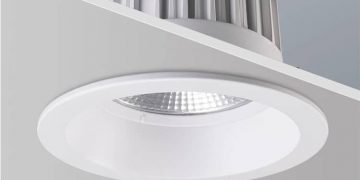For those new to power washing, understanding the fundamental principles is key to transforming outdoor spaces effectively and safely. This section covers the basics, providing beginners with a solid foundation to start their power washing journey.
What is Power Washing?: Power washing, also known as pressure washing, uses high-pressure water spray to remove dirt, grime, mold, and other unwanted materials from exterior surfaces like driveways, decks, patios, and siding. It’s a powerful cleaning method that can rejuvenate the appearance of outdoor areas.
Understanding PSI and GPM: The effectiveness of power washing largely depends on two factors – PSI (pounds per square inch) and GPM (gallons per minute). PSI measures the pressure exerted by the water, while GPM determines the volume of water used. The right combination of PSI and GPM is essential for effective cleaning without causing damage to surfaces.
Types of power washers
Types of Power Washers: There are primarily two types of power washers – electric and gas. Electric models are generally lighter and quieter, ideal for light to medium cleaning tasks, while gas models are more powerful and suited for heavy-duty cleaning jobs.
Choosing the Right Nozzle: Power washers come with different nozzle types, each designed for specific cleaning tasks. Beginners should familiarize themselves with the various nozzles and their applications to use the most appropriate one for each cleaning job.
The Importance of Safety: Power washing involves handling high-pressure water streams, which can be dangerous if not managed properly. Safety measures like wearing protective gear, ensuring a stable standing position, and being aware of your surroundings are crucial.
Benefits of Power Washing: Regular power washing not only cleans surfaces but also helps in maintaining them by preventing the buildup of harmful substances that can cause decay or damage over time. It enhances the aesthetic appeal of your outdoor spaces and can contribute to the longevity of your property’s exterior.
For beginners, grasping these basic concepts is the first step toward mastering power washing. With this knowledge, you can start to explore more advanced techniques and tackle a variety of outdoor cleaning projects with confidence.
Selecting the Ideal Power Washer: Guidance for Every Need
Choosing the right power washer is essential for effective and safe cleaning. This section provides guidance on selecting the best power washer to suit various needs, whether for light residential tasks or more demanding jobs.
1. Assessing Your Needs: Before purchasing a power washer, consider the types of tasks you’ll be performing. Lighter tasks like washing cars or patio furniture may only require an electric model, while tougher jobs like cleaning driveways or stripping paint might necessitate a gas-powered washer.
2. Electric vs. Gas Power Washers: Electric power washers are quieter, easier to maintain, and ideal for most residential uses. They’re perfect for smaller, more delicate tasks. Gas power washers offer more power and mobility but are louder and require more maintenance, making them suitable for larger or more challenging projects.
3. Understanding PSI and GPM: PSI (Pounds per Square Inch) measures the pressure exerted by the water, while GPM (Gallons Per Minute) indicates the water flow. Higher PSI and GPM ratings are necessary for tougher jobs, but using too much pressure on delicate surfaces can cause damage. Select a model that offers a balance suitable for your most common tasks.
4. Nozzle Types and Uses: Power washers come with various nozzles, each designed for different cleaning purposes. For instance, a 0-degree nozzle provides a concentrated spray for stubborn stains, while a 40-degree nozzle offers a gentler spray for washing cars or windows. Choosing a model with adjustable or multiple nozzle options can provide greater flexibility.
5. Portability and Storage: Consider the size and portability of the power washer, especially if storage space is limited or if you plan to use it in different locations. Electric models are typically smaller and more manageable.
6. Additional Features: Features like onboard detergent tanks, adjustable pressure settings, and easy-start engines can enhance the convenience and effectiveness of your power washing experience.
7. Budget and Warranty: Finally, consider your budget and the warranty provided with the power washer. Investing in a reliable, well-built model with a solid warranty can save you money and hassle in the long run.
By carefully considering these factors, you can select a power washer that not only meets your specific cleaning needs but also provides safety, convenience, and efficiency. The right equipment is a crucial step in transforming your outdoor spaces with power washing.
Key Safety Practices in Power Washing: Protecting Yourself and Your Property
As per Power Washing Dublin by Happy Clean, it can be a highly effective tool for cleaning outdoor spaces, but it also poses potential risks if not done safely. Understanding and implementing key safety practices are crucial for protecting both yourself and your property during power washing.
1. Personal Protective Equipment (PPE): Always wear protective gear when operating a power washer. This includes safety glasses to protect your eyes from debris, durable gloves to improve grip and protect your hands, and ear protection if using a gas-powered model. Wear non-slip, closed-toe shoes for stability and to protect your feet.
2. Read the User Manual: Familiarize yourself with your power washer’s specific model. The user manual contains important safety information and instructions for proper use.
3. Check Surroundings: Before starting, ensure the area is clear of people, especially children and pets. Also, remove or cover any objects that could be damaged by high-pressure water, like outdoor furniture or delicate plants.
4. Proper Handling and Operation: Hold the power washer’s wand firmly with both hands. Start with the nozzle pointing away from you and others, and never point it at anyone. Begin with lower pressure settings and increase gradually as needed.
5. Appropriate Settings for the Surface: Use the correct pressure and nozzle for the surface you’re cleaning. High pressure can damage softer surfaces like wood, while lower pressure might be insufficient for harder surfaces like concrete.
6. Avoiding Ladders: The recoil from a power washer can make using ladders dangerous. Instead, use extension wands or attachments for reaching high areas. If ladder use is necessary, ensure it’s stable and never work alone.
7. Water and Electrical Safety: Be cautious around electrical outlets, fixtures, and power lines. Keep the power washer and its cord away from water sources to prevent electrocution.
8. Regular Maintenance Checks: Inspect your power washer for any signs of wear or damage before each use. Regular maintenance helps prevent accidents and prolongs the life of the machine.
By following these key safety practices, you can ensure a safe and effective power washing experience. Remember, safety is paramount, and taking the necessary precautions will help avoid injuries and property damage.
Step-by-Step Power Washing Techniques: Mastering the Process
Power washing can significantly improve the appearance of your outdoor spaces when done correctly. This section provides a step-by-step guide to mastering power washing techniques, ensuring you achieve the best results safely and efficiently.
1. Setting Up: Assemble your power washer according to the manufacturer’s instructions. Attach the appropriate nozzle for the job and ensure all connections are secure to prevent leaks.
2. Preparing the Area: Clear the area of any movable objects, such as outdoor furniture or plant pots. Protect any delicate items like light fixtures or plants that might be damaged by the water spray.
3. Safety Check: Wear your protective gear, including safety glasses and gloves. Ensure the area is clear of people and pets.
4. Testing the Washer: Test the power washer on a small, inconspicuous area to get a feel for the pressure and to ensure it doesn’t damage the surface.
5. Applying Detergent: If your task requires detergent, apply it using a low-pressure setting. Allow the detergent to sit for a few minutes to break down the dirt and grime.
6. Starting the Power Wash: Begin washing by holding the wand at a consistent distance from the surface – usually about 12 to 18 inches. Use a sweeping motion, overlapping each stroke for even cleaning.
7. Adjusting Pressure and Nozzle: Adjust the pressure and change nozzles as needed based on the surface material and the level of dirt. Higher pressure and narrower nozzles can be used for tougher stains and surfaces.
8. Rinsing the Surface: After cleaning, rinse the surface with clean water to remove any remaining detergent and loosened dirt. Start from the top and work your way down for vertical surfaces.
9. Post-Cleaning Inspection: Once the area is dry, inspect your work for any missed spots or areas that might need a second pass.
10. Equipment Clean-Up and Storage: After completing your power washing, turn off the machine, disconnect it from the water source, and release any remaining pressure. Clean the nozzles and hoses and store the equipment properly.
By following these steps, you can master the power washing process, leading to clean, revitalized outdoor spaces. Remember, practice and patience are key to developing your power washing skills.
Adapting to Different Surfaces: Customized Cleaning Strategies
1. Power Washing Wood Surfaces (Decks, Fences, Siding): Wood surfaces are more vulnerable to high pressure. Use a lower PSI setting and a wider-angle nozzle to prevent damage. Move the wand in the direction of the wood grain and maintain a consistent distance to avoid leaving marks. Consider using a wood cleaner before washing to help loosen dirt and mildew.
2. Cleaning Concrete and Brick: Concrete and brick can handle higher pressure, but be cautious around joints and cracks. Use a medium to high-pressure setting with a rotating or turbo nozzle for stubborn stains. Pre-treat any oil or grease stains with a degreaser for better results.
3. Handling Vinyl Siding: When cleaning vinyl siding, use a medium pressure setting and a fan nozzle to prevent water from getting behind the siding. Work from bottom to top and rinse from the top down, ensuring you don’t spray directly into the gaps at the edges of the siding.
4. Washing Asphalt Driveways: Asphalt surfaces should be cleaned using a lower pressure to prevent dislodging the aggregate. A surface cleaner attachment can be useful for an even and thorough clean. Remove oil stains with a degreaser before washing.










